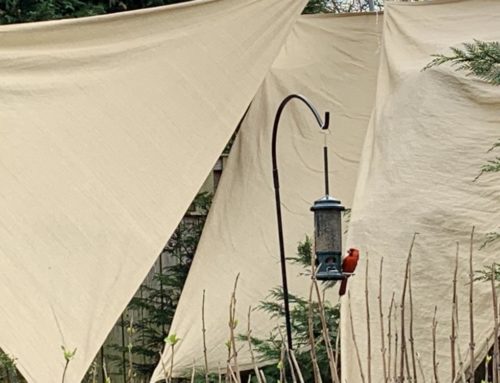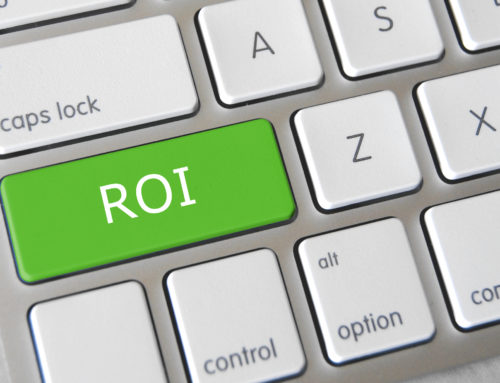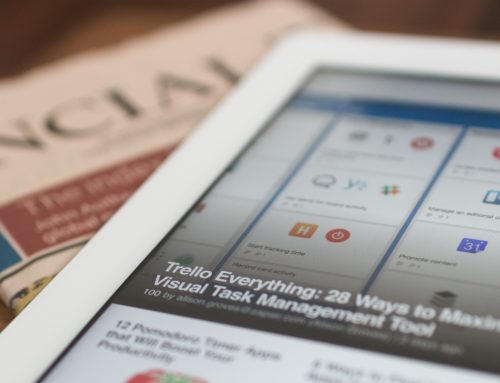 Last week, we spent two days on-site with a new client for a series of discovery meetings. (I love how the PR industry has co-opted the word “discovery” from the legal profession, by the way.) It was an intense couple of days, but absolutely essential to mapping out and implementing their social PR strategy, which is what we’ve been retained to do.
Last week, we spent two days on-site with a new client for a series of discovery meetings. (I love how the PR industry has co-opted the word “discovery” from the legal profession, by the way.) It was an intense couple of days, but absolutely essential to mapping out and implementing their social PR strategy, which is what we’ve been retained to do.
As I was going through my notes, and organizing tasks and to-dos in Asana, I realized sharing how we go about blueprinting – our process of researching and developing – a strategy might be helpful to you. So here we go. These are three key areas of research we undertake as we kick off an engagement.
1. Why were you hired?
It’s not enough to simply “generate buzz.” That might work for a while, but sooner or later, someone’s going to ask why, exactly, you’re around. So one of the first questions we try to get the answers to, even before we’ve even won the business, is: how exactly the client perceives PR will support its business objectives, and what those business objectives are.
Now, it’s not always obvious how “PR” will correlate to those objectives, particularly if your scope of work focuses primarily on earned media. But if you ask often enough how such-and-such earned media will help the business – at least, as perceived by the client – you can then start to sketch out what the desired customer journey will be, once that media is actually earned, and consumed.
Tip: don’t make this overly complicated. Look for the one or two, ok, maybe three, overarching business reasons your client wants “PR.” They want to attract a certain type of customer, they want to do a certain type of work, perhaps of certain scale, they want to be in the running for certain types of RFPs… that’s the kind of thing you have to understand right at the start.
That is why they want “PR.”
2. What sets you (or your client) apart?
There is no organization around that doesn’t say “it’s different.” And I get it: there’s no earthly reason for anyone to say, “Look at us, we’re just like everyone else, that’s why you should work with us, a-ha!” Just look at the language on this site. Nowhere does it tell you SBC is like every other PR consulting outfit out there. (Of course, we are different, but that’s besides the point… ha!)
This is actually good, because if executives didn’t say good things about their organizations, it would be hard to want to do business with them. But I truly think that if you want to know what sets your client apart from the herd its competition, you have to find out what others think … and not just those in senior management. So as soon as possible, meet with and hear from as wide a swathe of stakeholders as you can.
On an internal level, we try to meet with a range of employees. This helps us get a sense of not just the range of the organization and how its business units operate, but also of the personalities that make up the organization… because, ultimately, those are the stories we’ll be telling. On an external level, we look for research that tells us how the organization is placed vis-Ã -vis its stated competitors, and how it is perceived externally.
Tip: Sometimes it is possible to cull this information from information available online, or from prior research the organization has fielded. If not, you can draft and field a perception survey, which you can ask your client to send to a specific group of recipients, asking them to complete it anonymously.
3. How do they feature in relevant conversations… if at all?
When I talk about listening dashboards in my training programs, people tend to get that deer in the headlights, “OMG I can’t cope” look. I think this is because of how we’re constantly being told to “Listen and Join the Conversation!” by the various tool-makers out there. It’s overwhelming. And it’s exhausting.
Unfortunately, it’s also necessary. Almost always a PR engagement involves increasing visibility and thought leadership. If one is not actually monitoring the venues in which visibility and thought leadership matter, it’s impossible to track the effectiveness of one’s PR strategy and outreach.
The funny thing is, almost all of all are already using “listening dashboards.” Google Alerts are nothing if not an extremely simplified mechanism to “listen” for what is floating around online, based on the keywords plugged in. So what you want to do for your client is simply kick this up a notch. There is no shortage of lists of social media monitoring tools, but check out this list from my friend Ian Cleary on his Razor Social site.
Tip: You may need to use a combination of platforms. That’s ok. Just systematize how the information will be organized, and how you will analyze it to actually get the insights you need.
Tying things together
If you look at these three “buckets,” you’ll see how interwoven they are, and how learnings in one area will inform another.
For example, once we start to understand how the client wants PR to work for the business, we start to understand who the target audiences are, what kinds of media they consume, etc. This helps inform the development and management of the listening dashboard, because we know what kinds of conversations, and among whom, we’re listening for. We also start to understand which words and phrases are important, which help inform the outreach strategy, from generating owned content, to successful pitching, to taking a typical “PR” strategy and transforming it into a “social PR” strategy.
See what I mean? It starts to become a beautiful, never-ending loop, that also allows for pivoting the strategy when needed (I talked about this with Rebekah Iliff recently).
But it’s tough to get to that lovely, loopy point if you haven’t blueprinted your strategy first.
Image: Willrad von Doomenstein via Flickr, CC 4.0


![[EVENT]: PR Hacks for Small Biz (online)](https://shonaliburke.com/wp-content/uploads/2021/06/FB-Ad-1200x800-01-01-01-Copy-500x383.jpeg)






[…] in today’s PR world that I find it’s great to be able to peruse through it and refresh before I begin working on a strategy plan, go into a brainstorming session, or do a review of my […]
[…] actually talking to people, you can get a glimpse behind the scenes and apply meaning to your metrics. You have the opportunity to ask “Why?” and dig […]
[…] 1. Three Keys to Blueprinting Your Social PR Strategy […]
[…] is also a core element of any Social PR strategy; getting a listening system in place. Some easy ways to do […]
[…] you do this effectively gets us into the realm of tools, platforms, setting up listening dashboards, and so on. And while I truly believe there’s no one-size-fits-all solution, there’s always a […]
[…] you do this effectively gets us into the realm of tools, platforms, setting up listening dashboards, and so on. Though I truly believe there’s no one-size-fits-all solution, there’s […]
[…] you do this effectively gets us into the realm of tools, platforms, setting up listening dashboards, and so on. And while I truly believe there’s no one-size-fits-all solution, there’s […]
[…] you do this effectively gets us into the realm of tools, platforms, setting up listening dashboards, and so on. And while I truly believe there’s no one-size-fits-all solution, there’s always a […]
[…] The problem with these posts is that they’re trying to address a nuanced subject head-on (also that they are often written by people who don’t actually understand what PR is, or how to approach it strategically). […]
[…] The problem with these posts is that they’re trying to address a nuanced subject head-on (also that they are often written by people who don’t actually understand what PR is, or how to approach it strategically). […]
[…] owned media tactics into your PR efforts, then you’re missing a huge opportunity to practice social PR, which I strongly believe is the wave of our […]
[…] I think the problem with these posts is that they’re trying to address a pretty nuanced subject head on (also that they are often written by people who don’t actually understand what PR is, or how to approach it strategically). […]
[…] ready to fill out a calendar… don’t. First read this post I wrote not that long ago on how to blueprint your social PR strategy. Then go fill out that […]
rosemaryoneill I have to get there more often. Part of the 2015 plan… and I’m SO happy Hoop.la is doing so well!
Shonali rosemaryoneill How did I miss this reply? Perhaps my email is not at in-box zero, hehe. Hoop.la is making noise! Thanks for visiting our bloggy abode :)
MartinaMcGowan Thanks much for sharing!
TheJackB jfouts martinwaxman RenildeDeWit jocmbarnett bowden2bowden TYVM for sharing my #social #PR “blueprint” post!
RealSocialShark Thanks so much for sharing!
martinwaxman are you a Social Media Manager? See why http://SendSocialMedia.com is the #1 social media mgmt dashboard! http://bit.ly/I6fxtz
MattLaCasse You’re right. It was!
SeeDepthInc missusP Christine my pleasure, and thank YOU so much for coming over and leaving such a thoughtful comment!
It would be so much fun to chat about this stuff IRL. I’m in awe of the work you do. So I do hope that day comes soon!
rosemaryoneill I LOVED your post! I went across to comment and then had to do the whole registration thing, and then got sidetracked because, you know, squirrel. But when I read it, I totally saw what you meant!
How is Hoop.la going, my friend? And thank you so much for coming over to leave a comment, I really appreciate it!
Samantha Mick Thanks, Samantha! You know, we’re constantly hearing from colleagues about how they want a “seat at the table.” Well, they’re not gonna GET that seat if they don’t ask the right questions!
creativechaosc JimHunt ShellyKramer kathikruse Tenacity5Media 919Marketing TYVM for sharing!
SeeDepthInc Many thanks for your super comment, missusP!
MSR_PR Thanks so much for sharing!
Samjb I really appreciate it. Thank you again, and have a good conference!
This is a great post, Shonali! It clearly breaks down a PR practitioner’s role in establishing strategy and defining purpose. The
point you make about not just generating buzz is spot-on. Too often in
PR, and social media, I see companies that are just trying to gain
attention but without a clear plan or objectives. I think it is
important for PR practitioners to really initiate the dialogue about why a company wants to take certain measures and how the practitioner can contribute. By closely listening, the practitioner can align the goals and conversation of the company with the needs of the client.
It’s funny, I’ve recently been having a lot of conversations around this type of “discovery” when it comes to starting an online community too. Your process is directly applicable!
shonali i’m at a conference today and probably won’t hear it but wanted my students and followers to know about it.
Shonali, this is great! Thank you not only for linking to our “Turning PR from Cost Center to Profit Center” blog at SeeDepth, but for continuing to share such smart insights. I had this conversation with PRNewswire earlier this week as well, and discussed exactly what you are saying – PR teams need to start FIRST with understanding business objectives of its client (whether external or internal). It surprises me how many communicators don’t start there. We are well beyond the days of throwing spaghetti at the wall to see what sticks – we actually need to (and can) understand why we’re making the spaghetti in the first place. :)
It’s exciting to see the PR industry digging deeper to demonstrate the value of what we do. I’m loving the conversations around PR analytics and measurement, and your smart advice, combined with actionable recommendations, will continue to drive the industry forward. I hope everyone is listening to you!
Thanks so much,
Christine Perkett
SeeDepth
SeeDepthInc
missusP
shonali my pleasure. :D
DustinWStout Thanks for sharing!
MattLaCasse Are you sure? I’m gonna have to check the archives!
I think that was the first post I ever wrote for you, Shonali.
Samjb Thank you for sharing! I’d much appreciate a comment if/when you have the time. Happy Friday!
Kirk Hazlett HUGE props to you for coming over and being the first to comment, Kirk – thank you so much!
I love this: “everything we do, think and aspire to relates to everything else we do, think, and aspire to.”
Bam.
Especially w.r.t. networking, I think sometimes people get lost in networking for networking’s sake, and don’t really understand what it means to “add value.” So they’ll go to a ton of events, or happy hours (why do people in PR drink so much?!), and think they “networked” because they grabbed a bunch of business cards. Yet, they don’t really spend time learning about others, or building relationships with them.
Then they’re surprised when people react badly to being used – e.g. when I’m added to lists without my permission, just because someone met me somewhere – and don’t put everything on hold to help them when they need it.
I remember mattlacasse wrote a really great post about this a while back for WUL. The more things change, the more they stay the same…!
This post really puts everything into perspective. The public relations…or ANY…profession…is not a series of unrelated causes and effects. Everything we do, think, and aspire to relates to everything else we do, think, and aspire to. The key is to be proactive in your networking, in your relationship-building, and your career development. And, in the process, continually evaluate your progress (or lack thereof) to make sure that you’re on track.